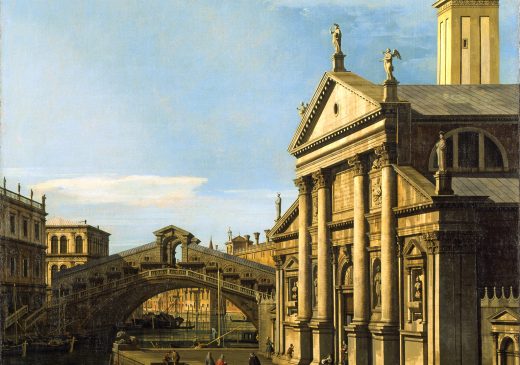Trained by his father, a painter of theatrical scenery, Canaletto specialized in views of his native Venice. By the 1730s, he was one of the most successful artists in Europe. His most avid patrons were the English aristocrats who came to Venice on their Grand Tour of Europe and commissioned painted views of the city as souvenirs. Canaletto depicted famous landmarks from different areas of Venice and made them appear to be located beside one another. His attention to detail helped make fictional scenes appear more realistic.
Giovanni Antonio Canal (18 October 1697 – 19 April 1768), commonly known as Canaletto (Italian: [kanaˈletto]), was an Italian painter from the Republic of Venice, considered an important member of the 18th-century Venetian school.
Painter of cityscapes or vedute, of Venice, Rome, and London, he also painted imaginary views (referred to as capricci), although the demarcation in his works between the real and the imaginary is never quite clearcut. He was further an important printmaker using the etching technique. In the period from 1746 to 1756, he worked in England, where he painted many views of London and other sites, including Warwick Castle and Alnwick Castle. He was highly successful in England, thanks to the British merchant and connoisseur Joseph "Consul" Smith, whose large collection of Canaletto's works was sold to King George III in 1762.


